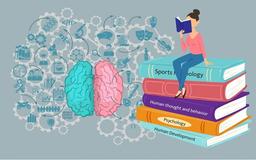
Review Game - Unit 4 Quiz
Quiz by Ashley Scolaro
Feel free to use or edit a copy
includes Teacher and Student dashboards
Measure skillsfrom any curriculum
Measure skills
from any curriculum
Tag the questions with any skills you have. Your dashboard will track each student's mastery of each skill.
With a free account, teachers can
- edit the questions
- save a copy for later
- start a class game
- automatically assign follow-up activities based on students’ scores
- assign as homework
- share a link with colleagues
- print as a bubble sheet
20 questions
Show answers
- Q1The psychological process of interpreting sensory information is calledsomatosensationsensationperceptionkinesthesis60s
- Q2A time lag between left and right auditory stimulation is important for accuratelylocating sounds.detecting pitch.recognizing rhythms.judging amplitude.60s
- Q3When asked to watch a video and press a key each time a black-shirted player passed a basketball, most research participants remained unaware of an umbrella-toting woman strolling across the video screen. This illustratedlatent content.neuroadaptation.REM rebound.inattentional blindness.60s
- Q4At 3 o'clock in the morning, John has already slept for 4 hours. As long as his sleep continues, we can expect an increasing occurrence ofhypnagogic sensations.REM sleep.muscle tension.NREM-3 sleep.60s
- Q5The smallest difference needed to tell the difference between two stimuli is called thejust noticeable difference.the McGurk effect.adaptation effect.absolute threshold.60s
- Q6Forty-year-old Lance insists that he never dreams. Research suggests that he probablyexperiences more NREM-2 sleep than most people.cycles through the distinct sleep stages much more rapidly than most people.would report a vivid dream if he were awakened during REM sleep.dreams during NREM-1 rather than during REM sleep.60s
- Q7The sense of ________ is a chemical sense.tasteequilibriumkinesthesispain60s
- Q8The ability to simultaneously process the pitch, loudness, melody, and meaning of a song best illustrateskinesthesis.accommodation.parallel processing.sensory adaptation.60s
- Q9Which of the following best explains the concept of "levels of awareness"?Animals have low awareness and humans have high awareness.Awareness is a continuum that includes both high and low awareness.With proper mind training, people can be made aware of all things.Children with low awareness and adults have high awareness.60s
- Q10Which theory emphasizes that dreams play a role in consolidating the day's experiences in our memories?neural activation theoryinformation-processing theorycognitive development theorywish-fulfillment theory60s
- Q11Which of the following is a psychedelic drug?LSDnicotinecocaineheroin60s
- Q12The minimum amount of stimulation a person needs to detect a stimulus is called theperceptual set.absolute threshold.critical period.just noticeable difference.60s
- Q13The semicircular canals are involved inkinesthesis.accommodation.the vestibular sensehearing60s
- Q14Rods areless light-sensitive and less color-sensitive than are cones.more light-sensitive and less color-sensitive than are cones.more light-sensitive and more color-sensitive than are cones.less light-sensitive and more color-sensitive than are cones.60s
- Q15The basic taste of bitter has evolved to help usavoid consuming rotten food.manage our water retention levels.avoid consuming poisonous food.detect energy rich food.60s